In this blog post, I’ll share with you 24 of the best things to do in Puebla, a city famous for its delicious food, gorgeous architecture, fascinating history, beautiful pottery, and colorful neighborhoods.
If you’re looking to escape the craziness of Mexico City, then you can’t go wrong visiting Puebla. With Mexico’s fantastic bus system, you can easily get to the city from the capital in 2 hours and from Oaxaca City in 5 hours.
Disclosure: This post may contain affiliate links. As an Amazon Associate and a Bookshop.org Associate, I earn from qualifying purchases. Please see this website’s Disclosure for more info.
In This Puebla Guide, You’ll Find…
I’ve divided the 24 things to do in Puebla into 5 categories. Just jump to the category that interests you the most.
Top Things to Do in the Historic Center
Puebla has one of my favorite historic centers in Mexico. It’s filled with gorgeous, drop-dead gorgeous buildings and colorful neighborhoods. I loved discovering its architectural wonders, cute cafes, and shops selling Talavera pottery.
Here is a list of things to do in Puebla’s historic center:
- Central Plaza – Don’t skip!
- Puebla’s beautiful architecture – Yes! BEST thing about Puebla
- Alley of Frogs – Absolutely yes!
- Plaza Parian – Yes, visit!
- Artist Quarter – Don’t skip!
1. Hang Out at Zocalo de Puebla (Central Plaza)
When you arrive in Puebla, the first thing you should do is visit the city’s heart and soul: the Zocalo (public square). This is the cultural and historic center of the city.
After traveling in Mexico for 6 months, I think Puebla has one of the country’s most festive and beautiful Zocalos.
Its lively atmosphere is due to the park’s small and compact size and the diners from the restaurants and cafes spilling out onto the sidewalks. As you walk down the street, you’re surrounded by people eating, drinking, and having a good time.
Like all of Puebla, the architecture is stunningly beautiful.
Spend some time here in the evening. Because there are so many people out and about, it feels 100% safe.
2. Discover the Beautiful Architecture of Puebla
After you’ve made your rounds of the Zocalo, wander along the streets radiating out from the park. This is where you’ll find some of Puebla’s most beautiful architecture.
2.1 Puebla’s architectural style
Talavera Tiles: The exteriors and interiors of Puebla’s buildings are decorated in blue, green, yellow, and orange ceramic tiles called azulejos. The ceramic is the same material used in their Talavera pottery.
If you’ve visited Portugal, you’re probably familiar with this architectural style as Lisbon is well-known for decorating its buildings with azulejos.
The other feature that stood out for me was the intricate white stucco decorating the windows and doors of the city’s buildings.
2.2 My two favorite buildings
These are two of my favorite buildings.
The one on the left is found right across from the Central Plaza in the Los Remedios restaurant on Avenida Don Juan de Palafox y Mendoza.
The building on the right is a small art gallery called Canto de Los Angeles on Calle 7 Ote.
2.3 My Favorite Streets in Puebla:
If you love gazing at beautiful architecture, check out these favorite streets of mine:
- Calle 5 de Mayo
- Calle la Dulce / Avenida 6 Ote
- Calle 3 Ote
- Calle 6 Norte and Avenida 5 Ote
- Calle 4 Sur
Calle 5 de Mayo
Starting at the corner of the Zocalo is Calle 5 de Mayo, a pedestrian-only street lined with trees, beautiful old buildings, shops, and street vendors selling everything from balloons to food to cell phone accessories.
Go in the evening when the food carts come out and the street lamps come on. This is when the street is at its liveliest.
Look above the first-floor shops at the intricately carved decorations and European-inspired balconies and street lamps.
Calle la Dulce / Avenida 6 Ote
Another of my favorite streets is the colorful Avenida 6 Ote, also known as Calle la Dulce (the Street of Sweets).
Besides the beautiful and colorful buildings, the street is famous for its many stores selling traditional Puebla sweets. Jump to my section on foodie things to do in Puebla to find a good shop to buy some.
Calle 3 Ote
Calle 3 Ote has two parts:
- the tree-lined pedestrian-only section, also known as John Lennon Alley,
- and another section lined with neon-colored buildings.
John Lennon never made it to Puebla. But he had one fan in the city who was so obsessed with him that he paid to construct a stone marker commemorating the legendary singer.
The rest of Calle 3 Ote is lined with neon bright pink, blue, and yellow buildings.
Calle 6 Norte and Avenida 5 Ote
Calle 6 Norte has interesting architecture and a lot of cool shops selling Talavera pottery.
Check out the facade of Museo del Alfenique on the corner of Calle 6 Norte and Ave 5 Ote.
Calle 4 Sur
Calle 4 Sur goes right in front of Templo de la Compania de Jesus and the Plaza de Democracia. It’s got some beautiful buildings and a church that will stop you in your tracks.
3. Stroll Down the Alley of the Frogs (Callejon del Sapo)
Alley of the Frogs was made for Instagram. I couldn’t get enough of the colorful buildings, the cobble-stoned streets, and the charming cafes and art galleries.
On Saturdays, the street, I suspect, becomes even more charming when it is closed off for an antique market.
There are 2 parts to Alley of the Frogs: one lined with vibrantly colorful buildings (above) and the other a pedestrian-only section (below).
Why is it called Alley of the Frogs?
Long ago, the nearby San Francisco River would flood and cover the area. The water attracted a lot of frogs. Hence, the name Alley of the Frogs.
4. Shop at Plaza Parian
If you’re looking for souvenirs and handicrafts, the outdoor market at Plaza Parian is a good place to start.
You can buy everything there, from Talavera pottery to traditional candy to t-shirts.
At the start of Plaza Parian is a young woman with a mobile food cart selling 4 delicious taquitos for MXN$15 (US$1).
5. Buy Some Art in the Artist Quarter
The Artist Quarter is the next fun area to explore.
Look for the Quarter’s 2 most famous statues:
- Three women (photo above).
- The other famous statue is of an artist and his easel.
The other interesting part is the tree-lined lane connecting the Artist Quarter to the Parian Market. On one side are little artist studios where artists paint and display their artwork.
Top Museums & Historic Buildings in Puebla
Some of Puebla’s best attractions are its museums and churches. Here are the key ones in the city and my opinion on whether you should visit or skip.
- Museo Amparo – Visit!
- Museo del Alfenique – Skip if you don’t speak Spanish. But check out its exterior (gorgeous!)
- Museo San Pedro de Arte – I heard it’s good!
- Casa de La Culturas – Visit if you’ve got time to kill
- Biblioteca Palafoxia – Not essential; look at it from the outside
- Catedral de Puebla – Yes!
- Templo de la Compania de Jesus – Pass by the church! Don’t need to enter
- Capilla del Rosario – Yes!
- Exconvento de San Francisco de Puebla – it’s a bit out of the way, but try to visit this ghoulish attraction
- Temple of Our Lady of Guadalupe – It’s a bit out of the way, so visit only if you’re an architecture buff.
6. Visit Museo Amparo
If you’re going to visit one museum in Puebla, make sure it’s Museo Amparo. This wonderfully eclectic museum has everything from Maya artifacts to colonial art to aerial photos of present-day Mexico.
The museum has a bonus: a rooftop terrace with beautiful views of the Puebla skyline. In pre-COVID times, there was an outdoor restaurant on the terrace. It might now be open.
7. Check out Museo del Alfenique
Originally, the Alfenique Museum was the home of a wealthy family. Today it’s a museum with displays on regional history and art. Unfortunately, there are no English explanations, so if you’re not fluent in Spanish, you won’t get much out of your visit. It’s too bad because Puebla has such a rich history.
The museum is stunningly beautiful architecturally. Even if you don’t enter, you should check out its exterior and take a peek at its courtyard.
The entrance fee is MXN$45, but students and teachers get half off (MXN$24). It’s open from 10:00 a.m. to 5:00 p.m. (Tu-Th) and 10:00 a.m. to 6:00 p.m. (F-Su).
8. Visit Museo San Pedro de Arte
Museo San Pedro de Arte is one museum I’m kicking myself for missing during my time in Puebla. The photos look cool, and it looks like an interesting place to learn more about Puebla’s architecture and history.
The museum costs MXN$45 to enter. It’s open 10:00 a.m. – 5:00 p.m. (Tu-Th) and 10:00 a.m. – 6:00 p.m. (F-Su).
9. Check out Casa de La Culturas
Across the street from a side entrance to the Cathedral is the House of Culture of Puebla (Casa de La Culturas). It’s a cultural center for the people of Puebla.
The Center holds temporary exhibitions of contemporary and traditional art. Some of the contemporary paintings are worth checking out.
You can watch dance performances and movies and listen to concerts at the cultural center as well.
This is also where you’ll find the Biblioteca Palafoxiana.
You can visit its Facebook page for info on upcoming exhibitions and cultural performances.
The entrance fee is free. The cultural center is open 9:00 a.m. – 8:00 p.m. (M-F) and 9:00 a.m. – 6:00 p.m. (Sa-Su).
10. Stop By Biblioteca Palafoxiana
Inside the Cultural Center is the oldest public library in the Americas and the only remaining original library of the Mexican religious orders. Called the Biblioteca Palafoxiana (Palafoxiana Library), it is definitely worth a visit.
You can just peek in from the outside and take a photo for free or pay to enter (MXN$40) and explore in more depth. I did the former.
In 1646, Bishop Palafox y Mendoza gave his library of 5,000 books to the Colegio de San Juan y San Pedro. He stipulated that the books he donated were to be made available to anyone who wanted to study and read them.
Over the years, other bishops, religious organizations, and private individuals donated their books to the Palafoxiana, helping it grow to over 40,000 books and rivaling eighteenth-century European libraries.
The library sustained damage from earthquakes. However, with the help of the World Monument Fund, the building has been restored and the interior renovated; preserving the city’s cultural heritage.
The library is open 10:00 a.m. – 6:00 p.m. (Tu – Su).
11. Visit the Catedral de Puebla
Want to be impressed?
Then, walk through probably Mexico’s grandest and most imposing church—the Cathedral of Puebla.
With its dark stone exterior, it feels more European than Latin American and more Gothic than Baroque.
The church was supposed to be built in Mexico City, but because the ground there wasn’t hard and stable enough, the cathedral was moved to Puebla.
I visited the church three times just to make sure I wasn’t missing anything as there are a lot of unique features. Plus! There are English explanations.
12. Pass By Templo de la Compania de Jesus
The Templo de la Compania de Jesus is worth passing by. The exterior is very striking. The bottom of the church is dark, gothic-like stone, while the baroque upper half resembles an elaborate wedding cake. Unfortunately, the interior is nothing to write home about.
It’s not hard to miss as it’s located between the Zocalo and the Alley of the Frogs.
13. Capilla del Rosario, Templo de Santo Domingo
Templo de Santo Domingo is the church with the most impressive interior in Puebla. It should not be missed on your tour of the city.
Inside is a beautiful chapel called Capelle del Rosario. It is one of the finest examples of Baroque architecture in Mexico.
14. Check Out Exconvento de San Francisco de Puebla
The Exconvento de San Francisco Puebla is probably the most bizarre sight in Puebla. Even though it’s a bit out of the way, you really must try to visit.
The corpse of a most beloved Franciscan friar who helped many people, especially the homeless, is on display inside the church. Father Sebastian died in the sixteenth century, and his corpse remains intact. It’s a ghoulish sight that is hard to look away from and forget.
Luckily, a visit to the church is included in the Free Walking Tour.
15. Stop By the Temple of Our Lady of Guadalupe
If you’re an architecture buff like me, then you must check out the beautiful Temple of our Lady of Guadalupe. Its exterior is covered in Talavera tiles.
The church is a bit out of the way, but if you’re heading to the train station to get to Cholula, it’s on the way.
Top Tours in Puebla
The bus tour and walking tour were the two most important things I did in Puebla. Without them, I wouldn’t have known about the city’s cool neighborhoods and streets because guidebooks and blogs usually don’t mention them.
I highly recommend doing the bus tour on the first day and the walking tour on the second or third day, or if you don’t have time, just do one on the first day. They’re both great! Of course, with the walking tour, it does depend on whether your guide is any good.
- Bus Tour – Yes! Definitely do this tour!
- Walking Tour – Absolutely yes!
16. Bus Tour of Puebla
You might not be a bus tour kind of person.
I’m not.
But because Puebla is so big and there’s not much travel information in the city, this bus tour is a good thing to do on your first day. It’ll introduce you to neighborhoods that you never thought of visiting before.
The tour is also reasonably priced at MXN$100 (US$7), and it’s only an hour.
Double-decker buses are parked along Avenida 2 Sur beside the Central Plaza. Three or four bus companies offer bus tours of Puebla.
The buses go to several neighborhoods I didn’t know about and would have missed without the tour. This is how I learned about the Artist Quarter and the Alley of Frogs.
We also visited the Historic Fort area, which I never would have visited since it’s quite far away from the historic center.
Unfortunately, there were no English audio guides. Only Spanish.
17. “Free” Walking Tour
Puebla has one of the best free walking tours I’ve done in Mexico. You’ll walk almost all the streets I mentioned above, plus a few other places most tourists don’t go. Another bonus is that you get to learn about the city’s history and contemporary culture.
I love that my guide pointed out some works of art located along the streets that I had missed, including this wonderful map of old Puebla in the above photo. I wish I remembered which street it was on.
We visited the oldest bakery in Puebla and a place that made tortillas.
Our guide took us to Paseo del Rio San Francisco, an area of abandoned textile factories that was rescued and renovated and turned into a mall, convention center, office space, hotels, restaurants, shops, art galleries, and a park.
We also visited some of Puebla’s best attractions, such as the Artist Quarter, the Alley of the Frogs, and other neighborhoods.
My tour started at 11:00 am and lasted nearly 3 hours.
Visit their Facebook page to learn about their tour. Contact them via Facebook messenger to find out the time and meeting place. You can also book through freetour.com.
You should tip at the end (MXN$100 – $200).
Top Foodie Things to Do in Puebla
If you are one of those people who travel to eat, then you’ll love Puebla. Spend your time trying as many of its specialties as possible and sampling some of its famous sweets. Here is a list of the best things to do in Puebla for food lovers:
- Try some of Mexico’s best food with these dishes
- Sample Puebla’s famous sweets
- Delve into Puebla’s culinary delights with a food tour
18. Chow Down on the Best Food in Mexico
Sorry, Oaxaca.
But Puebla has THE best food in Mexico.
If it’s any consolation, you are second.
The best thing to do in Puebla is to eat and eat and eat.
Here are 6 must-try dishes, all invented in Puebla. I’ve also included the restaurants I ate them at, which were all recommended to me by locals.
18.1. Chiles en Nogada
If there were a contest for the best dish in Mexico, the winner would be chiles en nogada.
Eating chiles en nogada in Puebla is special because this is where the dish originated. Unfortunately, you can only eat chiles en nogada in August and September, as it’s eaten in celebration of Mexican independence. Luckily, during those months, you can find it in almost every restaurant.
Restaurants: El Mural Puebla, Santa Clara, and La Mexicana
18.2. Mole Poblano
Don’t leave Puebla without trying its mole poblano, a dish consisting of braised meat (usually chicken) covered in a rich dark sauce made with over 30 ingredients, the most special one being chocolate.
Many Americans think that mole comes from Oaxaca. But actually, it originated in Puebla.
The mole in Puebla is different from that of Oaxaca. Pueblo’s flavors are more complex, and the chocolate taste is more apparent than that of Oaxaca’s. I prefer Puebla mole.
Restaurants: El Mural Puebla, Santa Clara, and La Mexicana
18.3 Enchilada Tres Moles
Another thing you have to do in Puebla is try enchilada res moles.
There are many different flavors of mole. I’ve heard 7 or 8, but I’ve also been told the number is infinite. In fact, mole is just another word for “sauce.”
The easiest way to try several different moles at once is to order enchilada tres moles. You’ll get 3 enchiladas, each one covered in a different mole: rojo (red), poblano (dark brown), and verde (green).
Restaurants: El Mural Puebla, Santa Clara, and La Mexicana
18.4 Cemitas
Before you eat a cemita, make sure you are starving because these sandwiches are huge!
The name cemita comes from the same name of the sesame seeds covering the bun. The seeds are an essential ingredient in the sandwich. Inside, the ingredients are pretty standard: fried breaded cutlet (I ordered breaded pork called Milanesa), fresh Oaxacan cheese, avocado, onion, jalapenos, and the herb papalo (sort of like cilantro). Mine came with tomatoes and lettuce as well, but I’ve read that those ingredients aren’t traditional.
For more info on this sandwich, read this terrific article on how a writer at Serious Eats fell in love with cemitas.
Restaurant: Antojito’s Tomy, Cemitas y Tortas La Poblanita
18.5 Tacos Arabes
Do you like Middle Eastern food? Turkish food? Greek food? Lebanese food?
If yes, then you’ll love tacos arabes.
Just like the name suggests, tacos arabes are Arab tacos.
They’re a cross between a taco and a schwarma.
The story goes that Middle Eastern immigrants (either Lebanese or Iraqi) brought their schwarma-making tools, ingredients, and skills with them when they settled in Puebla. The spit-roasted lamb of the Middle East was replaced with spit-roasted pork, but the pita bread and the marinated spices of cumin, oregano, and onions remained.
When I ate my taco arabes, I was given a sour cream/yogurt sauce with a touch of olive oil instead of the typical Mexican salsa. I almost thought I was back in Greece.
Supposedly, tacos el pastor comes from tacos arabes. The story goes that the Chilangos (people of Mexico City) took the tacos arabes idea of roasting the meat on spits and adapted the Puebla tacos even further to fit Mexican tastes, thus inventing tacos el pastor.
I’ve had taco arabes in other cities in Mexico and they don’t compare to what I had in Puebla.
Restaurant: Tacos Arabes Bagdad Centro
18.6 Chalupas Poblanas
You know the restaurant scene in When Harry Met Sally where Sally pretended she was having an orgasm to show Harry how easy it was for women to fool men?
I swear, I had a real food orgasm when I first ate a Puebla-style chalupa.
These things have so much flavor that even though I am miles away from Puebla, I can still recall what they tasted like.
Originating in Puebla, Chalupa poblanos are small fried masa tortillas covered first in salsa (red or green) and then topped with shredded chicken, pork, or chorizo. You can also add cheese, lettuce, onions, etc.
Do NOT leave Puebla without trying a chalupa.
Restaurant: Cemitas y Tortas La Poblanita
19. Sample Puebla’s Famous Sweets
Puebla is so famous for its sweets that it actually has a street named Calle de la Dulce (Street of Sweets). Near the main square, the street is lined with shops selling the city’s traditional candies, cookies, and anything with sugar in it.
How did Puebla become famous for its sweets?
There are two stories my free walking tour guide told me, but let’s go with the second one because that’s the one based on research by a historian. Nuns from the Convent of Santa Catalina had a recipe for some sweets. They taught the local mestizos how to make them, who then sold the sugary treats outside their churches after mass.
The three most traditional sweets are camotes, jamoncillo de pepita, and tortitas de Santa Clara. But I have to say my favorite is Cocao de con leche.
Shop: Dulceria Talavera
20. Explore Puebla’s Cuisine with a Food Tour
Despite Puebla having the best food in Mexico, it has few food tours.
Here are some Puebla food tours to check out:
- The Taste Seekers Crew offers a food tour in the evening for around US$85. It has pretty good reviews. The tour is in English.
- Tip Tours & DMC offers a half-day culinary tour of Puebla for around US$50. The tour is in English and Spanish, and participants sample 15 dishes, visit local markets, and learn about Puebla’s history and culture.
- Vivencias México offers an expensive tour that gets rave reviews. It includes food fasting and stops at some of Puebla’s popular attractions. The tour is offered in English, German, and Spanish.
Top Day Trips from Puebla
There are several day trips you can take from Puebla:
- Cholula – Of course, go!
- Cacaxtla and Xochitecatl Ruins – Yes! But it’s not easy without your own wheels
- Cantona Archaeological Site – Very hard to get to but if you can, yes!
- Popocatepetl Volcano – Not possible to climb
- Iztaccihuatl Volcano – Possible
- La Malinche Volcano – Possible
21. Visit Historic Cholula
Cholula is a city of 118,000 people located 11 kilometers from Puebla. There are a few good things to do in Cholula, so I highly recommend adding it to your Puebla itinerary.
Here are the must-visit attractions in Cholula:
- Great Pyramid of Cholula – Of course!
- Regional Museum of Cholula – FABULOUS museum! Do NOT skip the museum!
- Downtown Cholula – Charming, laid-back town
- Convento de San Gabriel Arcangel – Skip the interior
- Capilla Real de Naturales – Yes! Go inside the church. Very cool architecture!
21.1 The Great Pyramid of Cholula
Originally, my main purpose in adding Puelba to my Meixoc itinerary was to use it as a base to visit Cholula’s great pyramid.
Cholula has the largest pyramid by volume in the world today. It’s 177 feet (54 meters) high and almost 45 acres (18 hectares) wide. The Pyramids of Giza are taller, but Cholula is wider.
Church of Our Lady of Remedies
When you arrive at Cholula, you’ll first see an orangish or yellowish-colored (depending on the light) church sitting on top of a hill covered in vegetation.
The Church of Our Lady of Remedies (Iglesia de Nuestra Señora de los Remedios) was built in the 1600s. You can get to the church by walking up a road that wraps around the hill.
The Church sits on top of the pyramid.
So, where’s the pyramid?
The pyramid lies under the trees, bushes, and the Church of Our Lady of Remedies. It is the actual “hill.” The only part of the pyramid that you can see is its base.
The pyramid, dedicated to the god Quetzalcoatl, was first constructed in 200 BCE. Over the next 1700 years, whoever dominated Cholula added another layer to it, making it bigger and bigger. There are supposedly four layers under the vegetation. You can see a model of the different layers in the on-site museum.
By the time the Spaniards came, though, the pyramid was so overgrown with vegetation that they thought it was a hill. They liked the idea of building a church that dominated the town, so they built it on top of the hill.
Cholula Tunnels
The highlight of a visit to Cholula is a series of tunnels under the pyramid. Archaeologists originally built them to research the structure. You can explore the tunnels with or without a guide.
There is also a small museum on-site with a miniature replica of Cholula showing the different layers of the pyramid.
Unfortunately, when I was there in September 2021, I couldn’t enter the church, the pyramid, the museum, or the tunnels. At that time, both structures were open only on weekends, and I visited on weekdays.
I could only look at the pyramid and church from behind a fence.
21.2 Regional Museum of Cholula
There are other reasons to visit Cholula besides the pyramid. The Regional Museum of Cholula has a little surprise inside that you don’t want to miss! Besides the usual ancient and colonial artifacts, it’s got the coolest, wildest, and most fantastic alebrije I’ve ever seen in all of Mexico.
Alebrije are wooden statues depicting colorful animals and mythical creatures (the original ones were made of paper). The ones in this museum range from the usual elegant animals (iguanas, armadillos, rabbits, etc.) to life-sized skeletons, dragons, monsters, and fantastical creatures.
Another great place in Mexico to see alebrije is Oaxaca–check out my Oaxaca guide here.
The museum costs MXN$45 and is open 10:00 a.m. to 5:00 p.m. (Tu-Th) and 10:00 a.m. to 6:00 p.m. (F-Su).
21.3 Downtown Cholula
Before leaving Cholula, head downtown near the main Plaza to see the Convento de San Gabriel Arcangel and Capilla Real de Naturales.
The exterior of the convent is architecturally cool, but the interior is not very interesting.
However, the interior of the Capilla is quite unique, and you should definitely take a look inside. It is made up of 49 small domes. It looks like a mosque.
Getting to Cholula:
I got to Cholula via the Puebla-Cholula Tourist Train. This comfortable and modern train took passengers for FREE directly to a station across from the pyramid.
Let me just emphasize that word again: FREE.
Unfortunately, the train wasn’t generating enough revenue, so it is currently no longer running.
Not to worry!
There are three other ways to get to Cholula from Pueba:
- Take an Uber to Cholula. It’s fast and relatively inexpensive. Expect to pay between MXN$100 and $200 (US$7 – 13).
- Take the Bus: You can catch a bus to Cholula from behind Mercado de Sabores. This is probably the way I would go to Cholula.
- Join a Tour: A few tours go from Puebla to Cholula. Sadly, most of them are only in Spanish.
- Tip Tours & DMC – For US$7-$11, this tour takes you on a double-decker bus from Puebla to Cholula, stopping at the city’s main attractions. It’s in Spanish.
- Viajes Caravan offers a tour in English. It takes you to the main attractions in Cholula. It gets rave reviews but is more expensive than the previous tour (US$70). They’re known to cancel at the last minute for dubious reasons.
- Unlimited Experiences Puebla does a private tour of Cholula and Aitlixo. The tour gets rave reviews.
22. Explore the Cacaxtla Ruins
My biggest regret when visiting Puebla was not making it to the archaeological ruins of Cacaxtla. I was running out of time on my visa, and there was a lack of information on how to get to the ruins. If you have made it to them, let me know your thoughts in the comment section below.
Cacaxtla Ruins
The capital of the Olmeca-Xicalanca people, Cacaxtla is famous for its colorful murals. Few murals from ancient Meso-America have survived, so seeing some in person is quite special.
Divided into two by a staircase, one Cacaxtla mural is 80 feet (26 meters) long and depicts 2 battle scenes between 2 different ethnic groups, one of which is probably the Maya.
Other murals depict human figures from different cultures (Mixtecs, Maya, Teotihuacan).
Cacaxtla was at the height of its power from 650 to 950 AD and may have been responsible for the downfall of Cholula.
How to Get to Cacaxtla
When I was in Puebla, I tried to get to Cacaxtla by bus, but no one at my hotel could give me any advice and I couldn’t find any information on the internet on how to get there. Even today the information is pretty spotty. Here’s what I’ve found out:
- By Bus: You can take a bus from the CAPU Terminal in Puebla to Tlaxcala and then a taxi to the ruins or take a bus to San Martín Texmelucan and then a taxi to the ruins. Either way is not ideal.
- By Tour: The easiest way to visit Cacaxtla is with this Cacaxtla and Tlaxcala tour. You can book with Viator or Get Your Guide.
23. Cantona Archaeological Site
It’s crazy that the Cantona Archaeological Site isn’t mentioned more in travel guides and isn’t visited more by tourists. I didn’t know about it until I visited the Anthropology Museum in Mexico City, where a whole section is devoted to Cantona artifacts. The photos of the site look fantastic—great views of the volcanoes.
Cantona was the largest pre-Hispanic city in Mexico. According to Lonely Planet, it was prospering between 600 and 1,000 CE with a population of 80,000 people.
The site has some interesting features:
- 24 ball courts
- no mortar was used to build the structures, so the stones were held in place by their weight – that’s how the Incas built their structures.
- the buildings are connected by raised roads
- center for obsidian mining – this was the material used to make weapons in Mesoamerica
How to get to Cantona Archaeological Site
Like with Cacaxtla, information on how to get to Cantona is almost non-existent.
According to Rome2Rio, take a bus to Oriental and then to taxi to the Cantona Archaeological Site. But the ruins still look like they’re pretty far from Oriental.
Probably the easiest way to get to the ruins is with this private tour of Cantona.
24. Hike Up a Volcano
Another of the many reasons why I love Puebla is that it is surrounded by volcanoes (Popocatepetl, Iztaccihuatl, and La Malinche), one of which is still active (Popocatepetl) and two of which you can climb. Unfortunately, I didn’t get to visit any of them, but that gives me more reasons to return to Puebla.
Popocatepetl and Iztaccihuatl Volcanoes
You can still climb Iztaccihuatl but not Popocatepetl. According to Lonely Planet, Iztaccihuatl should only be attempted by experienced climbers and given its difficulty, guides are highly recommended. You can also book guided hikes online (the tour gets a perfect 5/5 rating)!
La Malinche Volcano
La Malinche Volcano, named after the interpreter and lover of Hernan Cortest, is a popular hiking destination located in the La Malinche National Park. At 4,461 meters (14,636 feet), it’s a difficult climb that’ll take at least 5 hours. You can also stay overnight at 3,333 meters, where you’ll find both rustic and luxury cabins run by Mexican Social Security Institute.
You can climb La Malinche independently or do a hiking tour by signing up with a guided tour.
Puebla Travel Guide & FAQs
- Puebla Itinerary
- How to Get to Puebla
- Where to Stay in Puebla
- Is Puebla Safe?
Recommended Puebla Itinerary
This was my itinerary for Puebla:
Puebla – Day 1
- I arrived in Cholula from Oaxaca at about 1:00 pm.
- Zocalo and Cathedral of Puebla
- Bus Tour
- Explore the streets around the Historic Center
Day 2
- Morning – Cholula
- Afternoon – Museo Amparo
Day 3
- Explore the different neighborhoods and streets of Puebla – Alley of Frogs, Artist’s Quarter, and so on
- Museo del Alfenique
Day 4
- Morning: Free Walking Tour
- Afternoon: Leave for Mexico City
How to Get to Puebla
Puebla is fairly easy to get to from Mexico City or Oaxaca City.
The problem, however, is the Puebla bus station.
It’s called CAPU and it’s huge! And if you don’t know what you’re doing, you can easily take a wrong turn and miss your bus.
So, I’m going to help you navigate it, so you don’t do like I did and get lost.
Buy your bus ticket directly from the ADO website or App on your phone. Bus tickets are cheaper on the ADO App than at the Bus Station. However, the App doesn’t take all foreign credit cards. They do take PayPal. If you can’t buy from the ADO App, try Bus Bud. It’s more expensive and doesn’t list all buses, but it takes foreign credit cards.
In addition, if you buy your ticket a few days in advance of your trip, you can sometimes get a discount.
From Mexico City to Puebla and vice versa
It’s a quick 2-hour bus ride from Mexico City to Puebla CAPU Station. You can get a bus from Norte Mexico Station or TAPO Station in Mexico City. Both ADO and AU buses go to and from Puebla multiple times a day.
Tickets range in price from MXN$125 to $406 (US$7 – $24).
An alternative is the e-bus that leaves from several places in Mexico City, like the WTC Holiday Inn Express and the Angel CDMX, and drops you off at Paseo Destino Shopping Mall in Puebla. You can, of course, take the reverse route.
The problem with the e-bus website is that it’s slow, and it doesn’t seem to accept foreign credit cards or foreign addresses. I was never able to complete a successful transaction using their website.
From Oaxaca to Puebla
From Oaxaca City to Puebla, the ADO bus is a nice and comfy 4-hour ride. Buy your tickets ahead of time on the ADO website.
Tickets range in price from MXN$500 – $736 (US$30 – $43).
Check out my travel guide for Oaxaca here.
Bus Station in Puebla
Arriving in Puebla
When you arrive at Puebla CAPU, look for the taxi stand. It’ll be on the same level as where your bus arrives. Don’t do like I did and follow the local passengers up the escalator.
The taxi ticket booth inside the terminal sells pre-fixed taxi fares. Tell the attendant where you’re going. and pay a fee according to what zone your destination is in. The attendant gives you a ticket that you take to the taxi stand outside. The taxi stand attendant will arrange a driver for you. You don’t have to worry about being cheated or kidnapped or any other bad scenarios you’ve dreamt up. It’s terrific!
It cost me MXN$81 from the CAPU Bus Station to the historic central district.
Departing Puebla
The departure area of CAPU Station can be overwhelming. When you first enter the bus terminal, you’ll be in a huge hall with ticket windows, restaurants, and shops. If you’ve already bought your bus ticket online like I usually do, skip the ticket window.
At the back of the hall are two hallways. One goes off to the left and the other to the right. Each hallway services specific bus companies. For example, the hallway on the left has buses for AU, while the hallway on the right covers ADO buses. There are more bus companies but those are the two I remember. Above the entrance to the halls will be signs saying which bus companies it contains.
Where to Stay in Puebla
Without a doubt, the best area to stay in is the historic center. For solo travelers, it’s safe and there are tons of places to eat nearby. I could leave my hotel in the evening and walk to a restaurant or shop or the historic center.
Puebla has something that I’ve never seen in other cities in Mexico. All hotels have a large letter H hanging outside of them, so you can easily spot a hotel when you’re walking down the street.
Expect to pay at least MXN$80 for a taxi from the CAPU Bus Station to the Central Historic District.
I have compiled a list of hotels at various price points. All are located in the safe historic center and they either have a lot of character and/or are very affordable.
Budget to Medium-Priced Accommodations
Hotel Santiago
Hotel Santiago (Booking.com | Agoda) has got to have the most perfect location on this list of places to stay in Pueblo. Located around the corner from the main square, it’s more on the budget rather than the mid-range end of the spectrum. The rooms are clean and the management treats its guests like royalty.
The only downside is the internet. The worst in Mexico. Perhaps it matters which floor you’re on. I was rarely able to pull up a web page. Management said I could switch rooms if the internet was still not working well for me.
Casa Pepe Puebla
Casa Pepe Puebla (Booking.com | Agoda | Hostel World) is a new hostel located a block from Alley of the Frogs and in a seventeenth-century mansion. It has stylish and clean dorms and private rooms. Each dorm room has its own attached bathroom. Breakfast included!
Hotel Isabel
Hotel Isabel (Booking.com | Agoda) is another very nicely located hotel, just a couple of blocks from the main square. It’s well-priced and the rooms look very comfortable.
Breakfast is included, which is definitely a plus!
Mid-range to Upper-priced
Hotel Andante
Another superb hotel in the city center, Hotel Andate (Booking.com | Agoda) is a themed hotel with free breakfast and a roof-top terrace. Each room is stylishly and colorfully decorated based on a different composer.
Hotel Boutique Casona de la China Poblana
The boutique hotel Casona de la China Poblana (Booking.com | Agoda) is located in a seventeenth-century mansion in the heart of the historic center. Rooms are stylishly and traditionally decorated. The internet connection might not be the most stable.
Is Puebla Safe for Solo Travelers?
A friend of mine said the city was dangerous, so I initially had second thoughts about visiting Puebla. On the bus from Oaxaca to Puebla, the scary stories the U.S. media likes to tell came flooding back to me. Those were the same ones my previous five months in Mexico debunked.
However, during my 4 days in Puebla, I never felt unsafe. Except for when I walked the 30 minutes to the train station and back, I mainly stuck to the central historic district. There generally isn’t much reason to go beyond it.
In the evenings, I walked around the Zocalo and went to and from restaurants and tourist sights. Not once did I feel I was in danger.
Final Thoughts: Best Things to Do in Puebla
A lot of people leave Puebla off their Mexico itinerary. It’s a shame because there are many things to see and do in Puebla, especially if you love architecture, history, art, and food. So, I hope this article has inspired you to visit.
If you are already planning on traveling to Puebla, I hope this guide has given you some ideas for what to do there.
Please feel free to leave any comments or questions in the Comment Section below.
If you’ve found this post helpful, please share it on social media.
Are You On Pinterest?
Hey! How about saving one of these pins to Pinterest to read for later?
And feel free to follow me on Pinterest where you’ll find loads of travel articles for everywhere around the world!
Thank you!

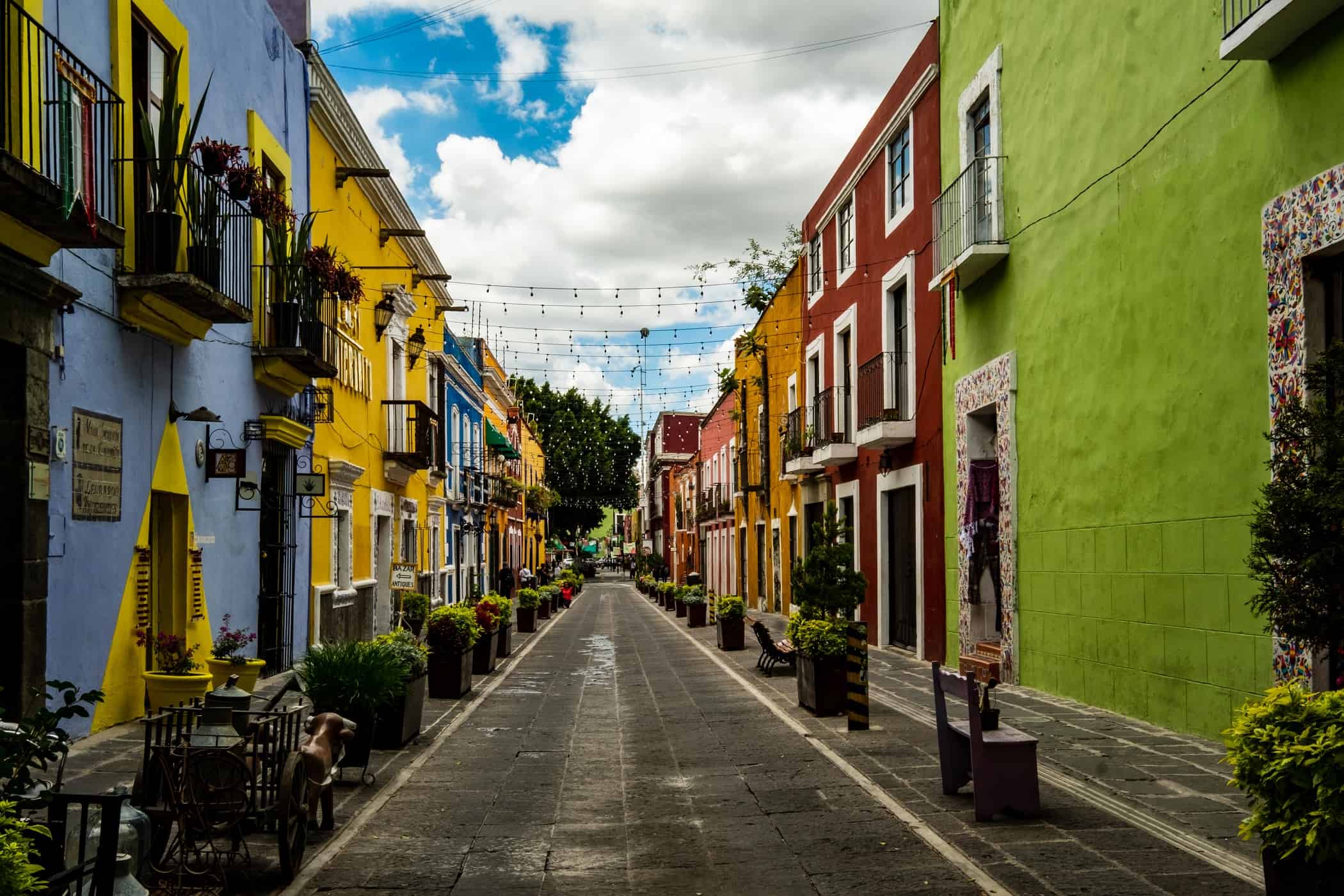

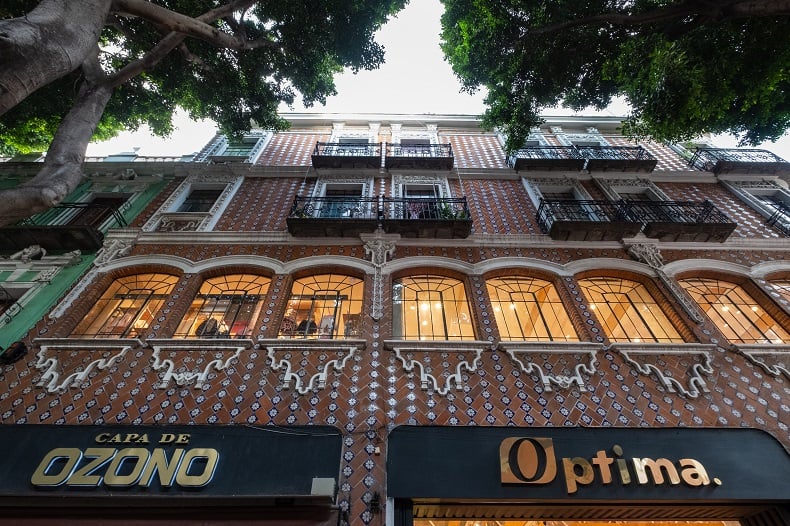

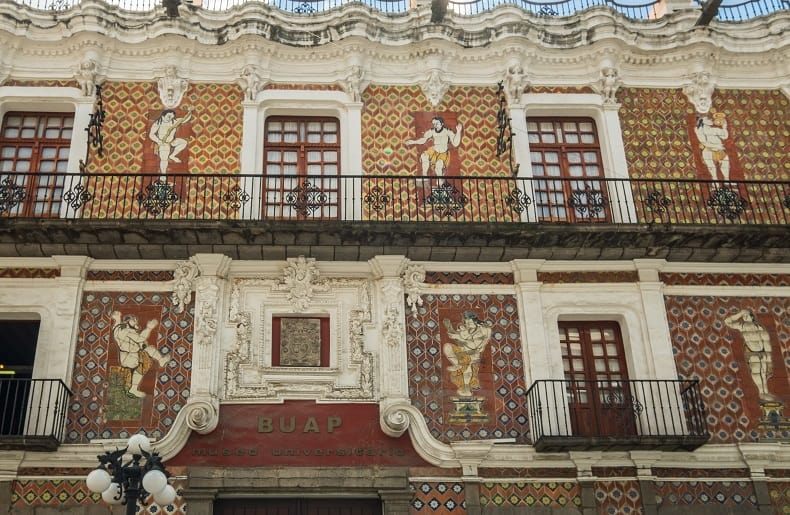














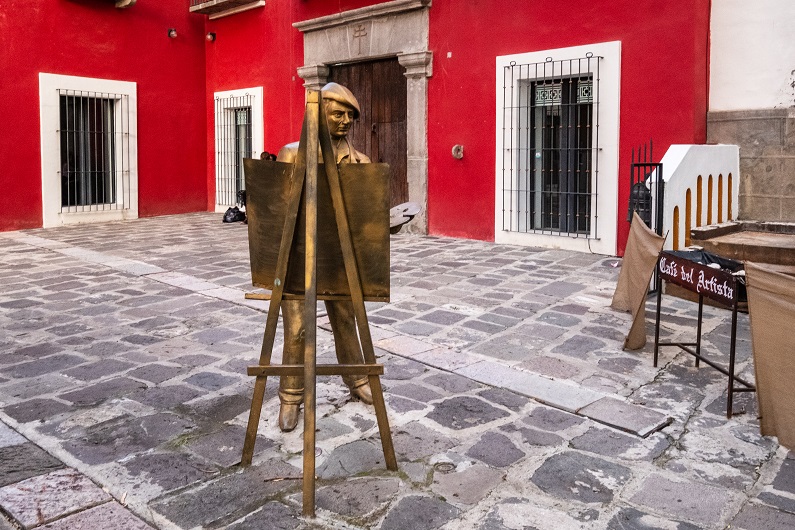




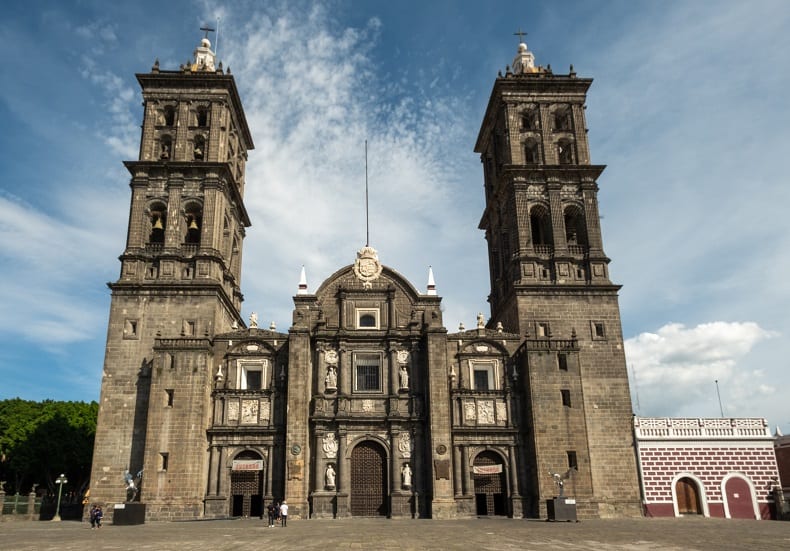



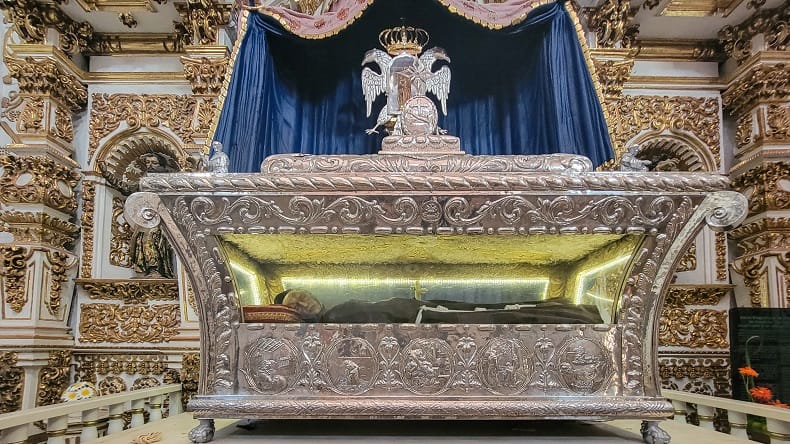

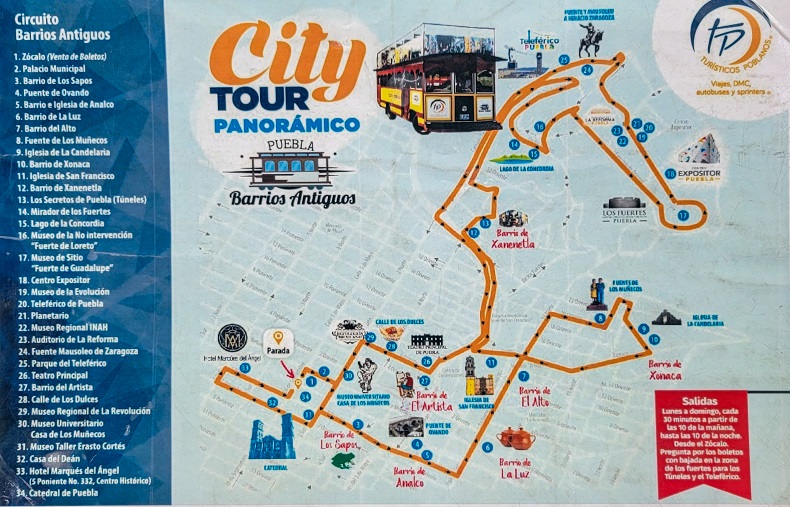











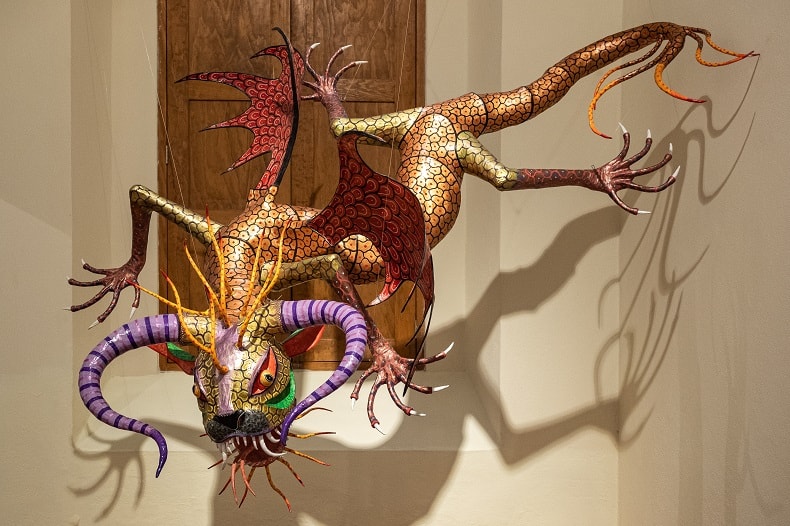


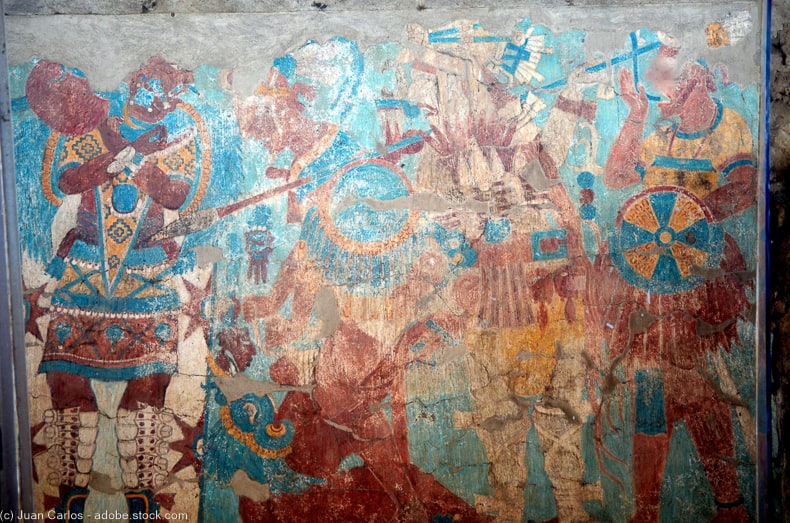














I have wanted to go to Mexico for a while and this looks amazing! What a beautiful city and complete walkthrough. I’m saving it!
I hope you make it to Mexico soon and definitely put Puebla on your itinerary.
What a lovely place! And you have done a great job of selling it to others, despite everything you heard before you visited! I agree with you that it’s important to take on others recommendations but also sometimes when you see somewhere yourself, it can have a very different impact on you. Clearly, Puebla did just that. It looks like a gorgeous place to me & you’ve put it on the map for a Mexico visit in the future!
I’m glad my sales job was persuasive. I really was trying to sell it as so many foreign tourists skip it. I hope you make it to Puebla on your next travels!
Thank you for sharing your Puebla guide! It’s incredibly informative and paints a vivid picture of the city’s charm and attractions. Your attention to detail and practical advice will definitely help travelers make the most of their visit. I appreciate the effort you’ve put into this comprehensive guide!
Thank you for this fantastic Puebla guide! Your insights and recommendations truly bring the city to life. I appreciate the effort you put into making this so helpful and engaging!
Puebla is a Municipality in Mexico. It is very famous for its Architecture, Cuisine, Culture, Historic sites, Sweet treats, volcanoes, National parks, and also best for Caves. Recently I visited this place and at the time, I have decided I will go to enjoy maid of the mist packages with my friend and we will explore the different places in this city.